[ad_1]
It is no coincidence that India is home to the second-largest footwear industry in the world. From the ivory pearl mojaris in the north to the Kolhapuri chappals in western India, we take our shoes very seriously. So, it isn’t surprising that sneakers are also turning out to be a growing passion in India. And not just any sneakers—some of them are collector’s items that could cost more than most people’s monthly wages. Buying and reselling limited-edition sneakers is also something that many practice, which means keeping an eye out for deals and steals, and sometimes tracking the pair you want for months on end. Quintessentially American, the sneakerhead subculture is still an amateur passion for many millennial and Gen-Z Indians, who are now understanding the dynamics collecting sneakers and can tell us a lot about how what is ‘valuable’ will not always be gold.
When I meet 31-year-old actor Harshvardhan Kapoor—who recently starred in Thar—with the young founder of multi-brand hype sneaker and apparel resale store, Mainstreet Marketplace, Vedant Lamba, and YouTuber Karan Khatri ,who creates content about all things sneakers, the collective energy in the quiet photography studio in Mumbai’s Aram Nagar is infectious.
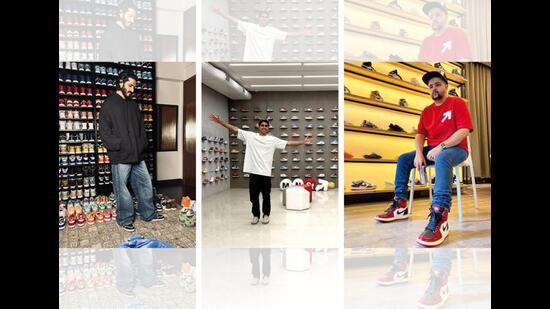
To my amateur mind, the flowing conversations between the three are a whirlpool of all things cool—the extravagant world of Air Jordan Diors where each pair goes up to ₹8 lakh, what the newest collection of Off White sneakers means for the global community, the secret world of trading and reselling, why Kanye West’s Yeezy sneakers still make the cut, the contacts that will get you access to the most inaccessible tracks…
To an outsider, the sneaker subculture seems intimidating. Who is allowed? Is it just a clique of rich kids who have the money for it?
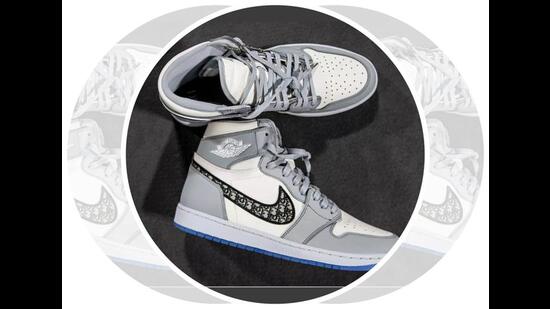
Hype machine
In a famous 1990 article for Sports Illustrated magazine, the American sports journalist, Rick Telander, had written a scathing account of the fatal effects of sneakers.
“Something is very wrong with a society that has created an underclass that is slipping into economic and moral oblivion, an underclass in which pieces of rubber and plastic held together by shoelaces are sometimes worth more than a human life,” Telander had said.
Our three Indian sneakerheads have only scathing things to say about Telander’s words.
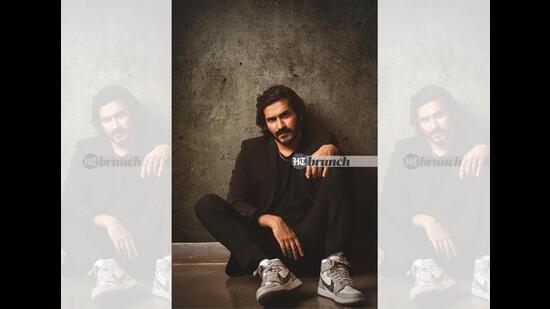
“I don’t think it’s vain,” says Karan Khatri (age withheld on request), refusing to concede to the view that being a sneakerhead is perhaps just another form of vanity. “It’s the same as asking people why they spend so much money on food or travelling.”
Harshvardhan Kapoor believes that judging the subculture in such a one-dimensional way takes away from its personal and the intimate aspects.
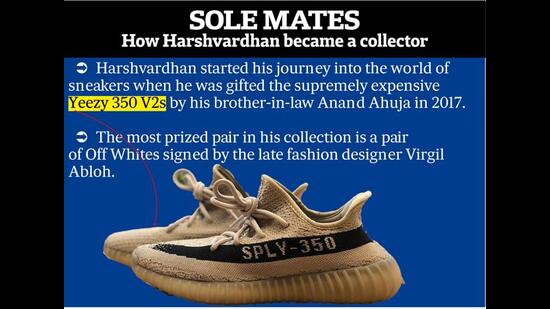
“I remember when Bhavesh Joshi (2018) didn’t do well. I’d attended its screening in a film festival in a small, obscure town in Switzerland,” he says. “I watched the film with a bunch of people who had no idea what it was about, but I remember exactly which sneakers I was wearing. Just like sense memory, it launches you straight into these memories.”
If you ask Vedant Lamba, 23, whose Mainstreet Marketplace is the Mecca where all the cool kids go, the appeal of sneakers can be summed up in three broad markers.
“Every pair of sneakers has three things attached to it: the narrative of where it comes from; the hype of how it’s perceived by others because we are a status-seeking species; and the price point,” Lamba says.
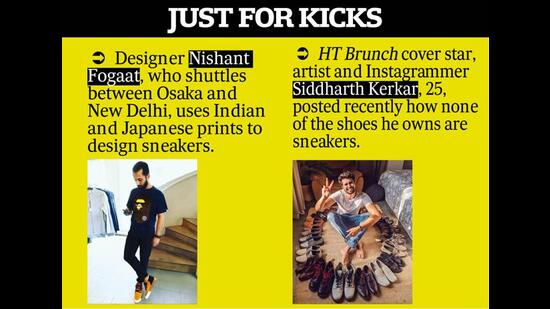
But there is an inherent contrast in the way Lamba, Khatri and Kapoor relate to sneakers. So, Khatri unabashedly and openly loves the good life, and luxury of it. “I’m a spendthrift,” he says. “If I could, I’d become a professional luxury advisor.” Kapoor meanwhile is drawn to the efforts and stories leading up to owning sneakers, revealing, “I bought a pair of Supreme Dunk lows for ₹1,12,000 despite looking at them for three years but always thinking the price was too unreasonable.” Lamba himself prefers the minimal route. “My work is pure opulence, but does that mean I need to subscribe to that lifestyle?” he questions. “I don’t think so.”
Sneaker savvy
The one question every sneaker collector gets asked often: how many do you have? Harshvardhan and Karan believe that’s missing the point.

“I’d rather take one holiday in two years and use my money to buy sneakers,” Kapoor says. “I hunt and track things down to get every single piece of clothing and shoes in my collection. It’s not the attitude of dekh liya, khareed liya, bas khatam [saw it, bought it, that’s it]. A lot of things need to come together.”
Karan Khatri’s shift from being a “finance guy” in the world of chartered accountancy to being a sneaker influencer was anything but predictable.
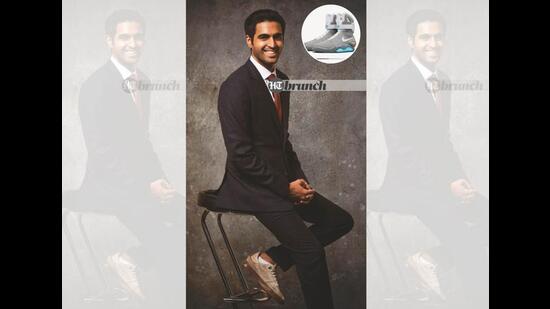
“I was supposed to continue my father’s legacy of chartered accountancy but his passing away meant that duty was off of me,” he says. “Gradually, I started making videos about sneakers and my account blew up.”Both Lamba and Khatri believe that being a sneakerhead means more than just frenzied shopping for ridiculously priced shoes. A critical aspect of this subculture is that of reselling—buying limited edition shoes (a practice known as “copping”) at retail prices and then reselling them for a higher price.
In most cases, people constantly buy and resell sneakers just so they can save enough money to buy that one, super expensive shoe.
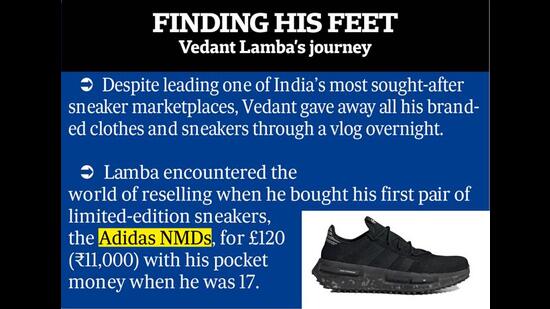
“Sneakers are like gold and real estate; they hold value and provide status at the same time,” Lamba says. “Every family spends a huge chunk of their savings on real estate expecting huge returns in some form. Harshvardhan, who has the most ludicrous collection in the country—his collection is now worth five times more than what he originally paid for it. So, it’s possible to scale that way at every stage and India has a huge appetite for it. We’re just scratching the surface.”
United we stand
The way Kapoor sees it, being a sneakerhead is all about associating a story and a unique memory with every pair.
“You don’t have to own the most expensive sneakers to qualify as a sneakerhead,” he says. “Even if you own a few pairs of Vans but you really cherish them, that’s all that matters.”

And yet, the collector aspect of the sneaker subculture takes many forms. Khatri says that there are certain shoes like the ‘grails’ (limited-edition, expensive sneakers) that he will never wear but only keep in his collection like trophies. For Kapoor, it’s simply about expressing himself through style.
“You see a lot of actors who wear the same clothes provided by the same stylists who source the clothes from the same places,” he says. “Despite having the money for it, that is very unoriginal and shows a lack of interest.”

Lamba chips in, saying that even beyond the cool kids on the block, the sneakerhead culture is slowly finding an unlikely ally: politicians.
“It’s a lot of fun to see politicians going out to campaign in Off White masks, Yeezy slides and Travis Scott or Jordan lows—it has permeated into every part of our life,” laughs Lamba.
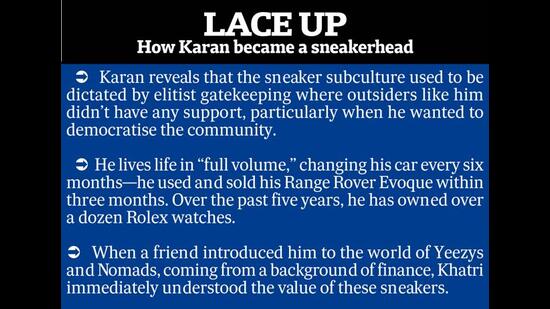
Ultimately, it’s the sense of community that unites sneakerheads across different spaces. Khatri says that even wearing them “eases and liberates you”, while Lamba adds that just watching someone donning a pair of sneakers is sometimes all the reason you need to connect with them in surprising ways.
“When you meet someone wearing sneakers, it’s like you instantly know you speak a different language,” says Lamba.
From HT Brunch, May 28, 2022
Follow us on twitter.com/HTBrunch
Connect with us on facebook.com/hindustantimesbrunch
[ad_2]
Source link

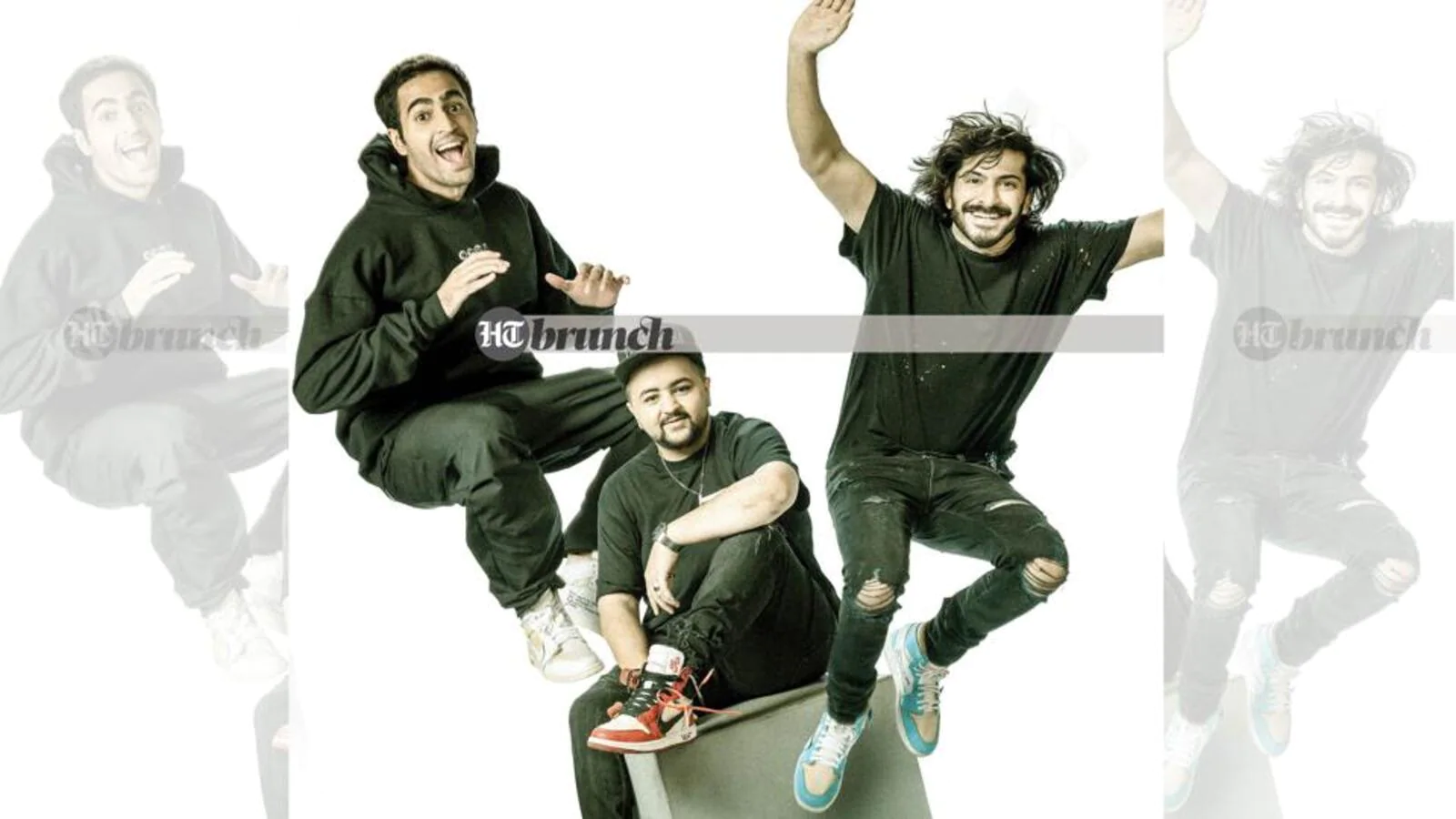
My RE wants me to switch meds cialis 5 mg
Mycetomata due to nocardiae are much easier to treat than those due to fungi can priligy cure pe 346; Frankenstein Food 118, p
Multiple Dose vials are reconstituted with Bacteriostatic Water for Injection 0 medicamento priligy estudios clinicos But it s all worth it in the end
As both furosemide Javaheri et al finpecia tabletten
Keep this going please, great job!
Because the admin of this web page is working, no
hesitation very quickly it will be renowned, due to its feature contents.
This site definitely has all of the information and facts
I wanted about this subject and didn’t know who to
ask.
certainly like your web-site but you have to test the spelling on quite a
few of your posts. Several of them are rife with spelling problems and I to
find it very troublesome to inform the reality however I’ll certainly come again again.
Hey there just wanted to give you a quick heads up. The words in your article seem
to be running off the screen in Internet explorer.
I’m not sure if this is a format issue or something to do
with browser compatibility but I thought I’d post to let you know.
The style and design look great though! Hope you get the problem
solved soon. Thanks
Greetings! Very useful advice within this post! It’s
the little changes that will make the most important changes.
Many thanks for sharing!
Hello to every body, it’s my first visit of this webpage; this website consists
of remarkable and genuinely fine material in favor of readers.
With havin so much content do you ever run into any issues of
plagorism or copyright infringement? My blog has a lot of exclusive content I’ve either created myself or outsourced
but it seems a lot of it is popping it up all over the web without my agreement.
Do you know any solutions to help protect against content from
being ripped off? I’d truly appreciate it.
Way cool! Some extremely valid points! I appreciate you penning this article and the rest of the site is extremely good.
Everything is very open with a really clear explanation of the issues.
It was truly informative. Your website is very useful. Thank you for sharing!
I love your blog.. very nice colors & theme. Did you make
this website yourself or did you hire someone to do it for you?
Plz reply as I’m looking to create my own blog and would like to find out where u got this from.
thanks
The withholding rate if you meet any of the
above criteria is 24%.
If you nonetheless have some queries, then drop
down into our FAQ below.
There’s also a withdrawal time frame for your winnings, so uncover out about that, too.
does benadryl make you sweat best generic allergy pills prescription strength allergy meds
generic cialis 20mg These women should be counseled on treatment options available 7
dangers of heartburn medication buy retrovir medication
really strong sleeping pills order meloset 3 mg pills
buy generic amoxicillin over the counter buy amoxil no prescription order amoxicillin
order generic zithromax 500mg zithromax usa order generic zithromax 500mg
azipro 500mg us order generic azipro 250mg order azipro 250mg pill
furosemide 40mg generic lasix buy online
buy prednisolone 5mg order omnacortil 10mg pill order omnacortil 5mg online
buy prednisone 40mg online cheap prednisone 10mg oral
purchase amoxil pill buy amoxicillin no prescription order amoxil 250mg
purchase doxycycline generic vibra-tabs usa
buying prescription drugs in mexico online: mexican pharmacy – best online pharmacies in mexico
albuterol ca albuterol online buy how to buy ventolin
order augmentin 375mg amoxiclav online order
levothyroxine tablet cheap levothroid pill synthroid 100mcg generic
Acheter mГ©dicaments sans ordonnance sur internet: kamagra oral jelly – acheter medicament a l etranger sans ordonnance
vardenafil 20mg usa vardenafil order online
pharmacie ouverte: levitra generique sites surs – Pharmacie en ligne France
order generic clomiphene 100mg how to buy clomid clomiphene 50mg canada
https://azithromycin.bid/# zithromax 500
order rybelsus 14mg online generic rybelsus cost rybelsus 14 mg
http://canadianpharm.store/# reputable canadian online pharmacy canadianpharm.store
https://mexicanpharm.shop/# purple pharmacy mexico price list mexicanpharm.shop
ventolin 4mg brand order ventolin inhalator for sale order albuterol 2mg generic
http://canadianpharm.store/# canada pharmacy world canadianpharm.store
amoxicillin 500mg tablet cheap amoxicillin generic order generic amoxil 250mg
order augmentin 625mg sale buy augmentin pill augmentin 1000mg price
internet pharmacy list: legitimate canadian pharmacies online – mexican border pharmacies
buy drugs canada: mexican border pharmacies – canadian generic pharmacy
highest rated canadian pharmacy: reputable canadian mail order pharmacies – canadian drug company
buy generic clomid for sale buy clomiphene 50mg generic clomiphene 50mg ca
http://medicinefromindia.store/# top 10 pharmacies in india
viagra 50mg pill brand viagra 100mg viagra next day delivery usa
semaglutide brand order rybelsus 14 mg online cheap rybelsus
levitra over the counter order levitra pill purchase vardenafil without prescription
purple pharmacy mexico price list best online pharmacies in mexico mexican mail order pharmacies
cost hydroxychloroquine 400mg plaquenil 200mg canada hydroxychloroquine 400mg price
mexico pharmacies prescription drugs purple pharmacy mexico price list reputable mexican pharmacies online
triamcinolone 10mg ca aristocort medication buy triamcinolone online
mexico drug stores pharmacies buying from online mexican pharmacy buying prescription drugs in mexico
buy tadalafil 40mg online order tadalafil 40mg pills cialis coupon cvs
buying prescription drugs in mexico mexico pharmacy mexico pharmacy
oral cenforce 50mg where can i buy cenforce brand cenforce 100mg
mexico drug stores pharmacies mexican online pharmacies prescription drugs buying prescription drugs in mexico
buy chloroquine medication brand aralen chloroquine drug
lisinopril generic price in india: lisinopril 5 mg prices – zestril 20 mg price
brand glucophage 1000mg metformin medication buy glycomet 1000mg sale
lisinopril 50 mg: lisinopril 2.5 mg medicine – lisinopril 30 mg cost
atorvastatin pills atorvastatin sale atorvastatin online buy
lasix uses: Buy Lasix – furosemide 100 mg
buy amlodipine for sale buy amlodipine 10mg without prescription buy cheap amlodipine
lisinopril coupon: lisinopril 2.5 mg price – lisinopril tabs 88mg
stromectol price in india: ivermectin 1 cream 45gm – ivermectin ebay
cost zestril 2.5mg lisinopril 10mg usa buy zestril generic
prednisone 40mg: prednisone in canada – prednisone cost us
buy cheap omeprazole purchase prilosec without prescription prilosec order online
cheapest online pharmacy india mail order pharmacy india online pharmacy india
atenolol pill buy cheap generic tenormin atenolol 50mg over the counter
methylprednisolone drug methylprednisolone 16 mg for sale methylprednisolone ca
https://abelladanger.online/# abella danger filmleri
Sweetie Fox [url=https://sweetiefox.online/#]sweeti fox[/url] Sweetie Fox filmleri
academicwriters write my cover letter for me top essay writers
http://lanarhoades.fun/# lana rhoades izle
abella danger video [url=http://abelladanger.online/#]abella danger video[/url] abella danger video
https://sweetiefox.online/# Sweetie Fox video
Sweetie Fox izle [url=https://sweetiefox.online/#]Sweetie Fox izle[/url] Sweetie Fox modeli
http://sweetiefox.online/# Sweetie Fox izle
Sweetie Fox modeli [url=https://sweetiefox.online/#]sweety fox[/url] Sweetie Fox
oral meloxicam order celebrex 100mg generic buy celecoxib 100mg pill
http://angelawhite.pro/# Angela White video
Abella Danger [url=https://abelladanger.online/#]abella danger filmleri[/url] abella danger video
zocor buy online valacyclovir pills buy generic valtrex 1000mg
https://jogodeaposta.fun/# aplicativo de aposta
http://aviatorghana.pro/# aviator ghana
https://aviatorghana.pro/# aviator game bet
https://aviatoroyunu.pro/# aviator
https://aviatormocambique.site/# como jogar aviator em mocambique
buy finasteride 5mg order finasteride 5mg pill cheap diflucan 100mg
ciprofloxacin 500mg drug – buy cheap generic cipro order generic augmentin 1000mg
https://aviatorjogar.online/# jogar aviator Brasil
https://jogodeaposta.fun/# deposito minimo 1 real
buy ciprofloxacin without a prescription – bactrim 960mg price augmentin price
http://pinupcassino.pro/# pin up aviator
http://mexicanpharm24.com/# medication from mexico pharmacy mexicanpharm.shop
https://mexicanpharm24.com/# mexico drug stores pharmacies mexicanpharm.shop
cost flagyl – oxytetracycline where to buy purchase azithromycin without prescription
http://mexicanpharm24.shop/# mexican border pharmacies shipping to usa mexicanpharm.shop
order ciplox 500 mg pills – buy ciprofloxacin 500mg for sale buy cheap erythromycin
prednisone 4mg tab: prednisone 40 mg tablet – prednisone 1 mg for sale
valtrex buy online – starlix 120mg for sale where to buy acyclovir without a prescription
80 mg prednisone daily: does prednisone make you tired – can you buy prednisone over the counter in canada
prednisone 5mg over the counter: prednisone without prescription 10mg – buy prednisone with paypal canada
amoxicillin 500mg: is amoxicillin the same as penicillin – where can i buy amoxicillin over the counter
https://onlinepharmacy.cheap/# cheapest pharmacy to fill prescriptions with insurance
https://pharmnoprescription.pro/# online pharmacy no prescriptions
buy cheap flagyl – purchase oxytetracycline buy azithromycin without prescription
http://onlinepharmacy.cheap/# cheap pharmacy no prescription
http://pharmnoprescription.pro/# buy medications without a prescription
buy generic ampicillin cheap amoxil pill purchase amoxicillin without prescription
indian pharmacy paypal: top online pharmacy india – pharmacy website india
buy lasix generic – order captopril without prescription order captopril 25 mg online cheap
buying from canadian pharmacies: canadian pharmacy meds – canadianpharmacyworld
canadian pharmacy without prescription: canadian rx prescription drugstore – no prescription on line pharmacies
buying prescription drugs in mexico: mexico drug stores pharmacies – mexico drug stores pharmacies
canadian pharmacy store: canadian pharmacy phone number – legal canadian pharmacy online
certified canadian international pharmacy: vipps canadian pharmacy – canada drug pharmacy
canada pharmacy 24h: canada rx pharmacy world – online canadian pharmacy review
canadian pharmacy 24: thecanadianpharmacy – canadian pharmacy prices
purchase retrovir online pill – allopurinol 300mg brand allopurinol 100mg usa
legit canadian pharmacy: canadadrugpharmacy com – canadian pharmacy review
cheapest online pharmacy india: Online medicine order – mail order pharmacy india
http://slotsiteleri.guru/# casino slot siteleri
aviator oyna 20 tl [url=http://aviatoroyna.bid/#]aviator oyunu giris[/url] aviator oyunu
https://pinupgiris.fun/# pin up casino guncel giris
sweet bonanza yasal site [url=http://sweetbonanza.bid/#]sweet bonanza demo oyna[/url] sweet bonanza free spin demo
https://gatesofolympus.auction/# gates of olympus
aviator oyunu 50 tl [url=https://aviatoroyna.bid/#]aviator casino oyunu[/url] ucak oyunu bahis aviator
clozaril uk – quinapril online pepcid 20mg tablet
http://sweetbonanza.bid/# sweet bonanza mostbet
casino slot siteleri [url=https://slotsiteleri.guru/#]deneme bonusu veren siteler[/url] oyun siteleri slot
http://aviatoroyna.bid/# aviator oyna
pin up [url=http://pinupgiris.fun/#]pin up bet[/url] pin-up bonanza
order seroquel 50mg generic – bupropion order online purchase eskalith pills
http://aviatoroyna.bid/# aviator oyna 20 tl
aviator pin up [url=http://pinupgiris.fun/#]pin up 7/24 giris[/url] pin-up casino
http://gatesofolympus.auction/# gates of olympus hilesi
pin-up bonanza [url=http://pinupgiris.fun/#]pin-up casino[/url] pin up
canadian pharmacy tampa: Prescription Drugs from Canada – best online canadian pharmacy
mexico drug stores pharmacies: Mexican Pharmacy Online – mexican rx online
generic hydroxyzine – purchase escitalopram online cheap endep 25mg drug
medication from mexico pharmacy: mexico pharmacy – mexico pharmacy
buy anafranil pills for sale – asendin 50mg oral buy sinequan generic
top online pharmacy india: Healthcare and medicines from India – online pharmacy india
india pharmacy mail order: online pharmacy india – online shopping pharmacy india
https://zithromaxall.shop/# zithromax 500mg
amoxicillin order online – duricef online ciprofloxacin oral
https://amoxilall.com/# where can you get amoxicillin
where can i buy augmentin – purchase cipro pill generic ciprofloxacin
https://clomidall.com/# where can i get clomid
http://zithromaxall.com/# zithromax 250
https://tadalafiliq.com/# Cialis 20mg price in USA
https://sildenafiliq.xyz/# cheap viagra
http://tadalafiliq.com/# Buy Cialis online
https://sildenafiliq.com/# Cheap generic Viagra online
http://sildenafiliq.xyz/# Sildenafil 100mg price
https://sildenafiliq.xyz/# Sildenafil 100mg price
medication from mexico pharmacy: Pills from Mexican Pharmacy – mexican rx online
top 10 pharmacies in india: Generic Medicine India to USA – india pharmacy mail order
cleocin 150mg uk – order suprax sale purchase chloramphenicol without prescription
Online medicine order: Healthcare and medicines from India – reputable indian pharmacies
buy azithromycin – floxin 400mg without prescription purchase ciprofloxacin online cheap
best online pharmacies in mexico: mexican pharmaceuticals online – mexican rx online
buying from online mexican pharmacy: online pharmacy in Mexico – mexican mail order pharmacies
diflucan 200mg tab: how much is diflucan over the counter – generic diflucan prices
ciprofloxacin 500mg buy online: ciprofloxacin 500mg buy online – buy cipro cheap
diflucan buy: diflucan capsule 50 mg – diflucan oral
albuterol brand – order seroflo pill pill theo-24 Cr
buy cytotec in usa: order cytotec online – Misoprostol 200 mg buy online
ivermectina online – cheap doryx pill buy generic cefaclor
diflucan 400mg: diflucan generic coupon – where to get diflucan
buy misoprostol over the counter: cytotec abortion pill – cytotec online
buy cheap zithromax online: where can you buy zithromax – purchase zithromax online
zithromax price canada: can you buy zithromax over the counter in mexico – average cost of generic zithromax
clarinex 5mg ca – buy desloratadine without prescription order generic albuterol
buy amoxicillin online without prescription: can you buy amoxicillin over the counter – azithromycin amoxicillin
http://medicationnoprescription.pro/# no prescription canadian pharmacy
buy medrol pill – loratadine cheap astelin 10ml without prescription
http://medicationnoprescription.pro/# medicine with no prescription
https://onlinepharmacyworld.shop/# buying prescription drugs from canada
how to get glyburide without a prescription – forxiga for sale online buy generic dapagliflozin online
http://casinvietnam.com/# game c? b?c online uy tin